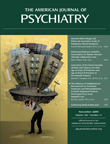In This Issue
Neighborhoods of Dual-Diagnosis Patients
Neighborhood influences outcomes for patients with dual diagnoses of substance use disorder and another major mental disorder. Stahler et al. (p. Original article: 1258 ) found that among 380 recently hospitalized patients with dual diagnoses, those who lived farther from Alcoholics Anonymous meeting locations were less likely to keep their first outpatient appointment after discharge. The role of neighborhood was also highlighted by one of the individual-level variables related to noncompliance—a postdischarge return to the home, instead of an institution. A second outcome measure, rehospitalization within 1 year, was less likely for those living in neighborhoods with higher educational attainment. Rehospitalization was more likely for those living near Narcotics Anonymous meeting sites, which are located in areas with high concentrations of drug users. The role of neighborhoods is explored further in an editorial by Dr. Carl Latkin on p. Original article: 1207 .

Bipolar II Postpartum Depression
Many postpartum mood disorders are depressive episodes of bipolar disorder, rather than unipolar major depression. Sharma et al. (p. Original article: 1217 ) recommend that clinicians ask all pregnant women about personal and family history of bipolar disorder. This history can help identify postpartum bipolar episodes, as can assessment of manic and hypomanic symptoms in women with postpartum depression. Research provides few guidelines for pharmacotherapy specific to the postpartum period. Carbamazepine and valproate are considered compatible with breastfeeding, but nighttime breastfeeding may lead to sleep deprivation, a possible trigger for bipolar episodes. Antidepressant monotherapy should be avoided. Genetic and clinical aspects of postpartum mood disorders are examined further by Dr. Susan Hatters Friedman in an editorial on p. Original article: 1201 .
Improving Care for Bipolar Disorder
A program designed to improve care for bipolar disorder revealed that the biggest improvement came from increased administration of antimanic medications. In the Department of Veterans Affairs (VA) study reported by Bauer et al. (CME, p. Original article: 1244 ), hospitalized patients with bipolar disorder were randomly assigned at discharge to usual care or to collaborative care that included group psychoeducation, simplified treatment guidelines for providers, and access to a nurse care manager. Medication types, doses, and blood levels were assessed every 6 months for 3 years. Drug treatment was then characterized as concordant or not concordant with VA practice guidelines. Concordance for both treatment groups began at 50%–60% and then declined, but at the end of the 3 years it was approximately 40% for patients receiving collaborative care but less than 25% for those in usual care. This study is discussed by Dr. Alexis Giese in an editorial on p. Original article: 1205 .
Vigabatrin for Cocaine Dependence
Abstinence from cocaine at the end of a 9-week trial was nearly four times as common among cocaine-dependent patients taking vigabatrin as among those taking placebo. Vigabatrin is an antiepileptic medication used outside the United States. It elevates concentrations of γ-aminobutyric acid (GABA) and blunts cocaine-induced increases in extracellular dopamine in animals. In the randomized, double-blind trial by Brodie et al. (p. Original article: 1269 ), the rates of abstinence in 103 Mexican parolees after treatment with vigabatrin or placebo were 28.0% and 7.5%, respectively. During 4 weeks of follow-up, abstinence continued for 12 of the 14 patients taking vigabatrin who were abstinent at the end of treatment. In addition, among participants who used alcohol at baseline, 43.5% of those taking vigabatrin reported alcohol abstinence at the end of treatment, compared to 6.3% for placebo. Dr. Kathleen Brady highlights ethical issues in an editorial on p. Original article: 1209 .



